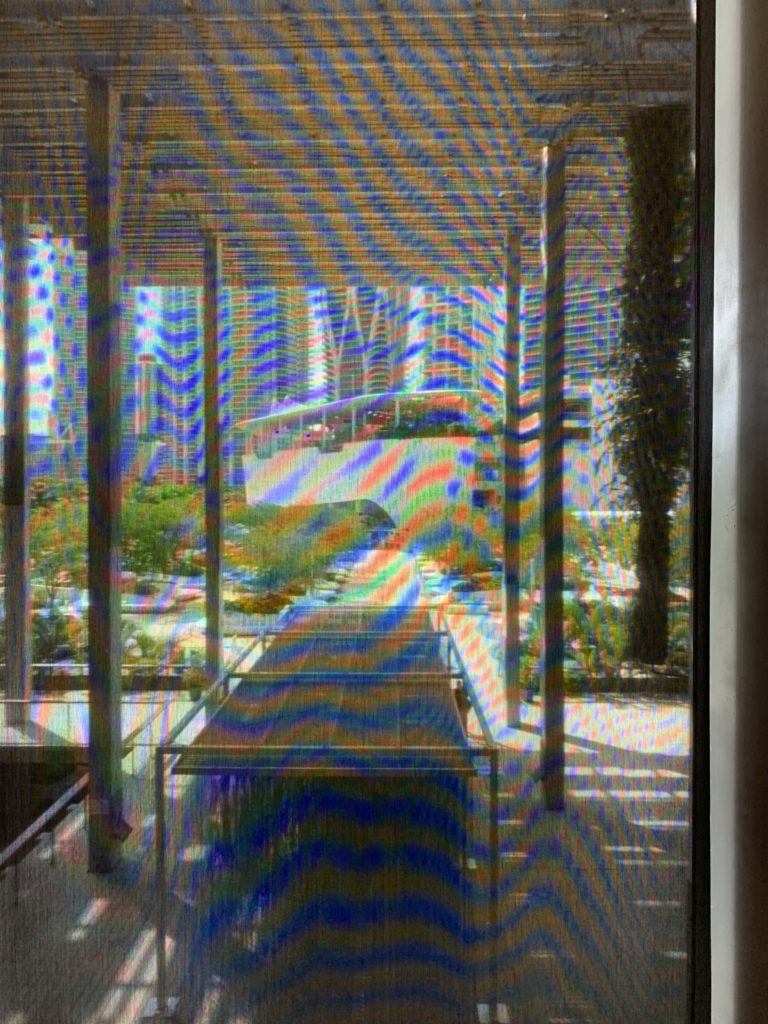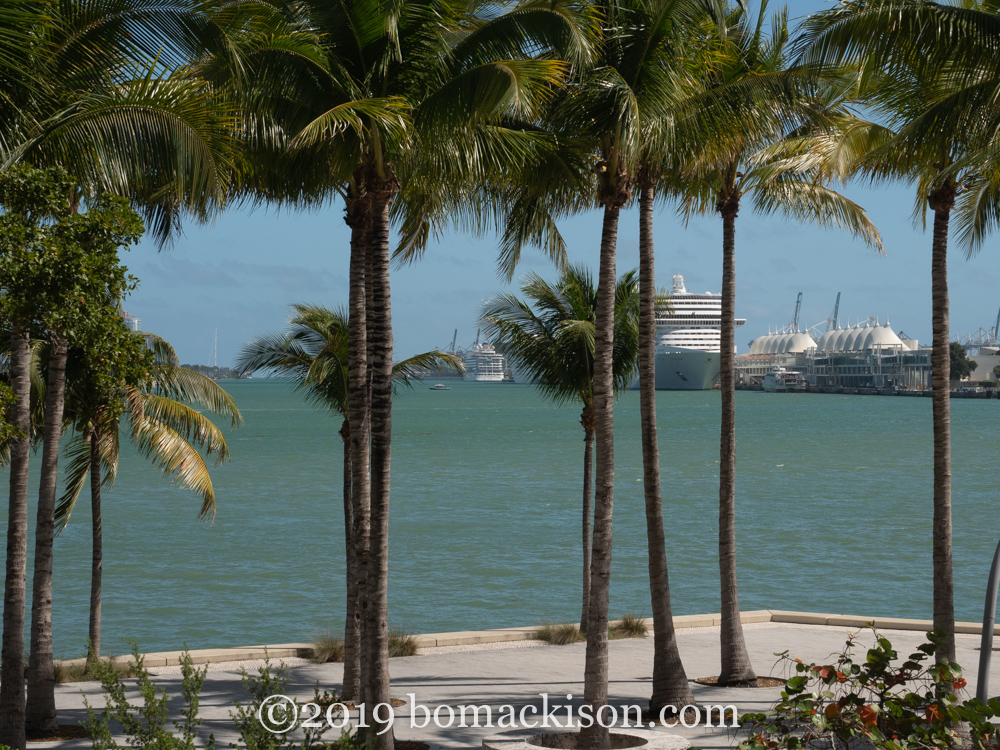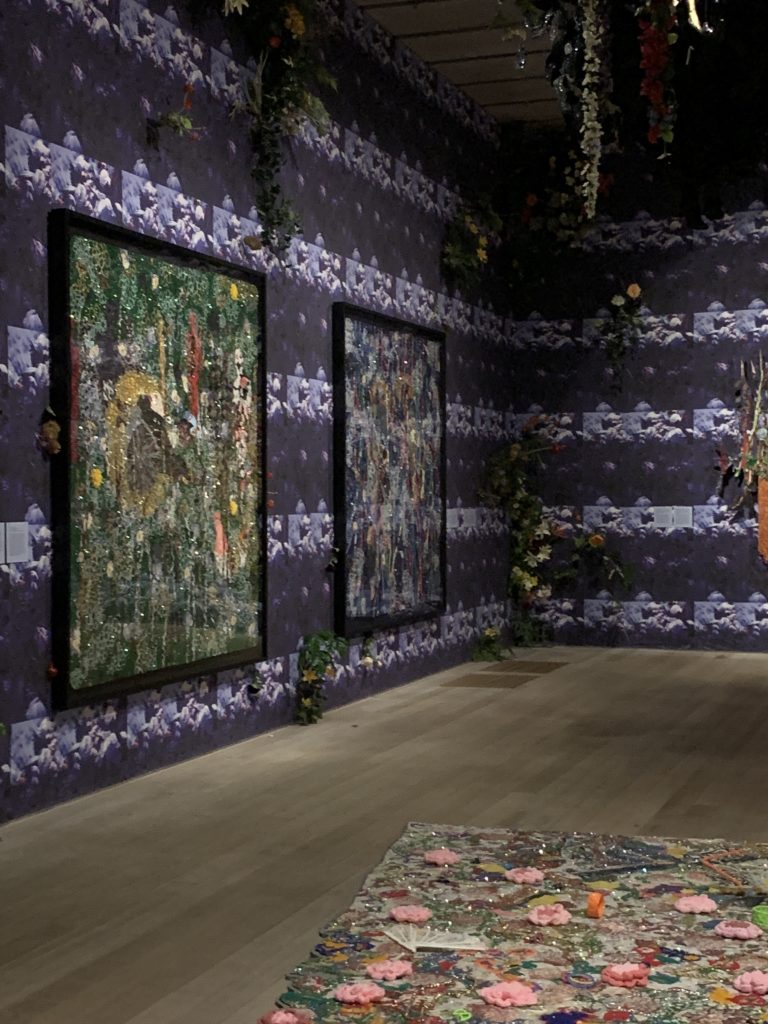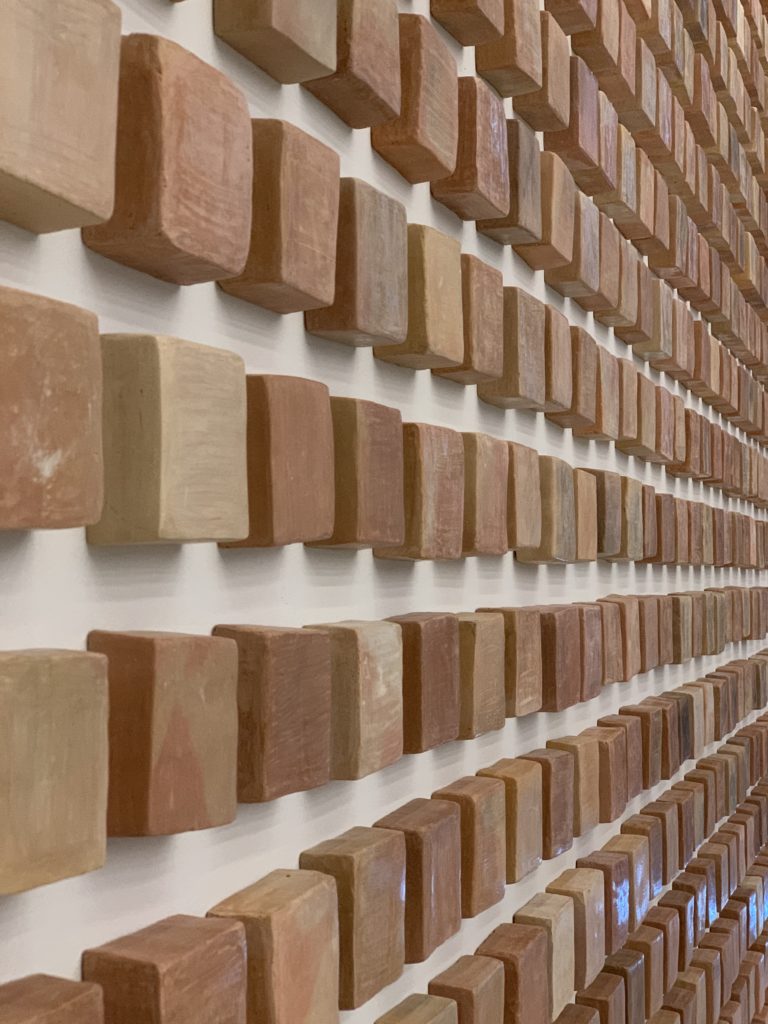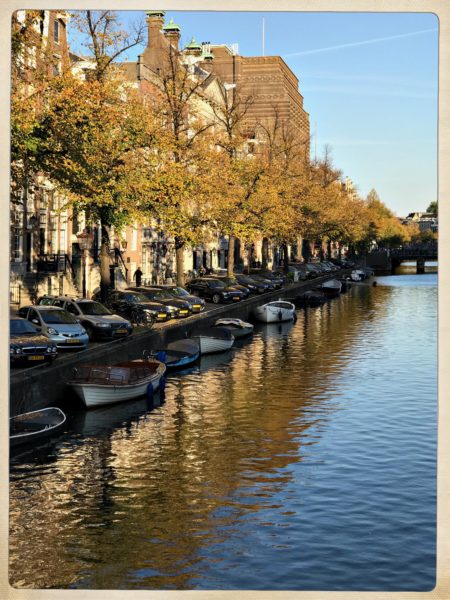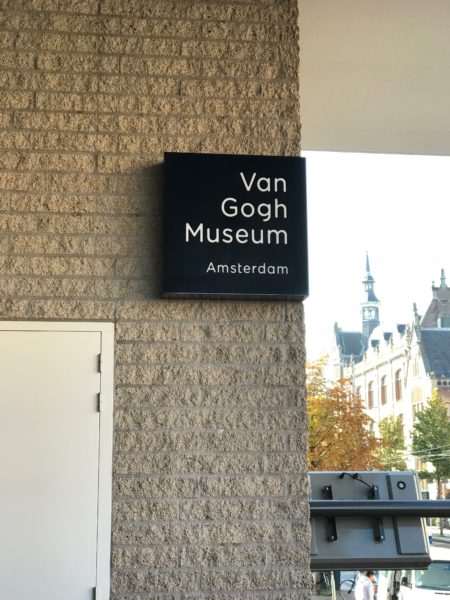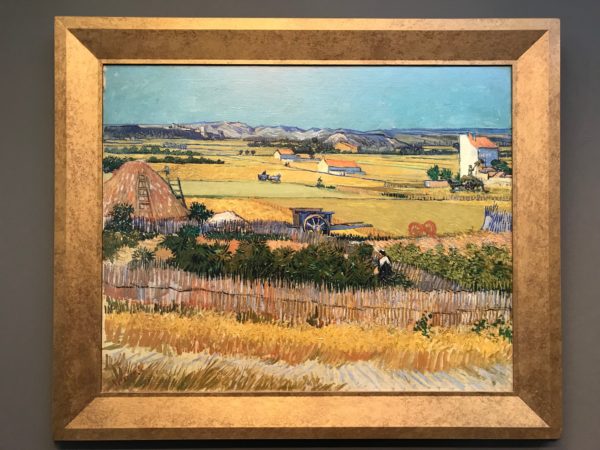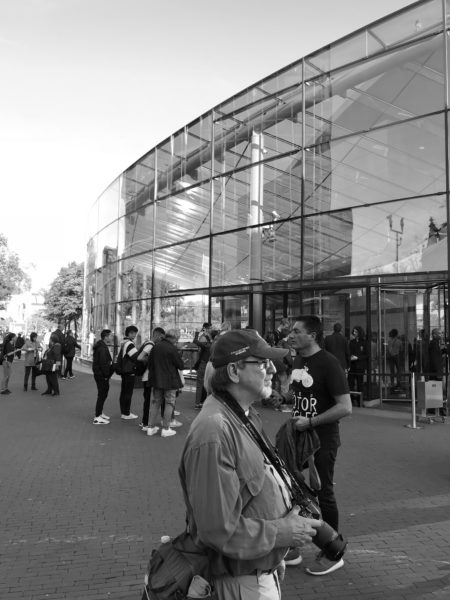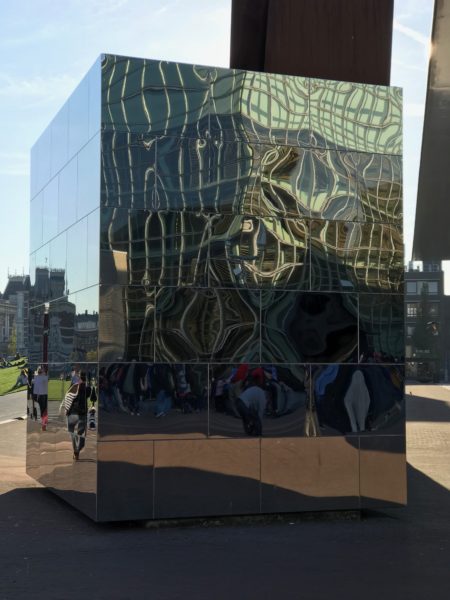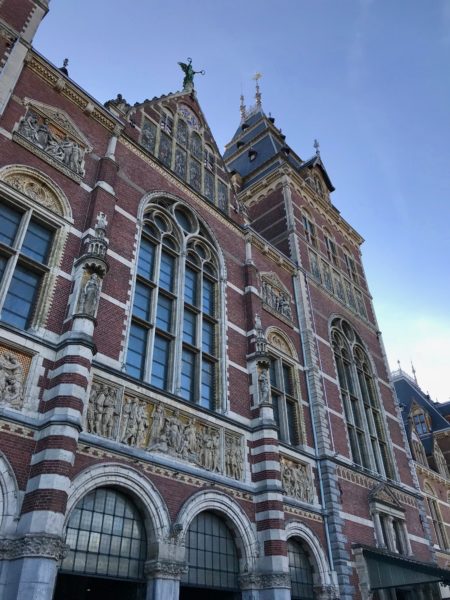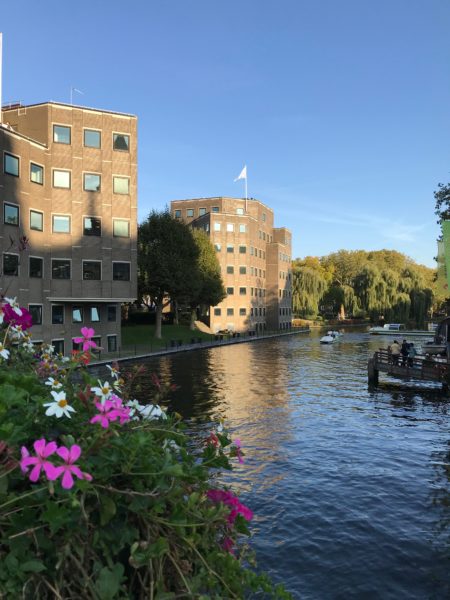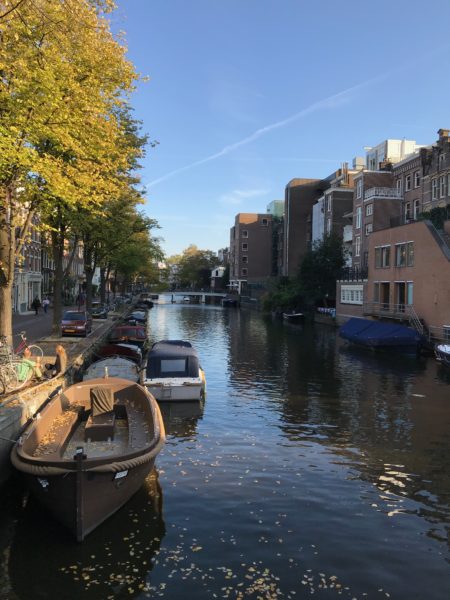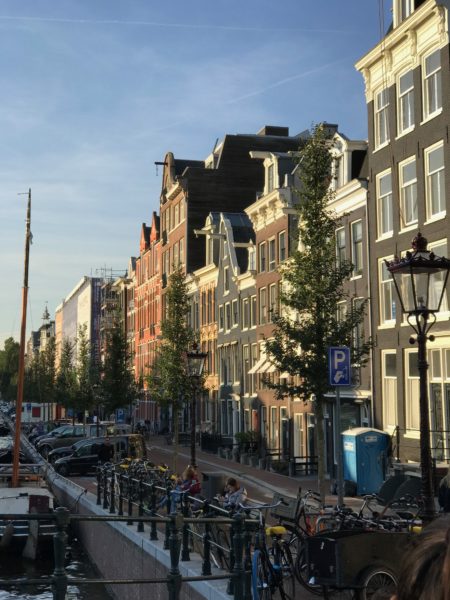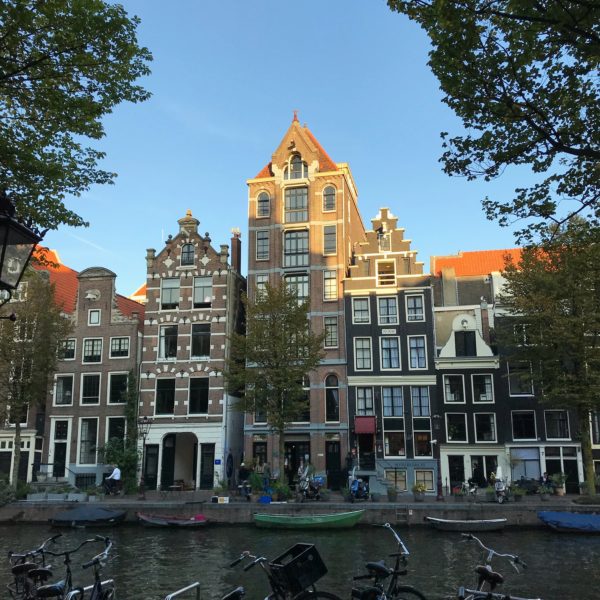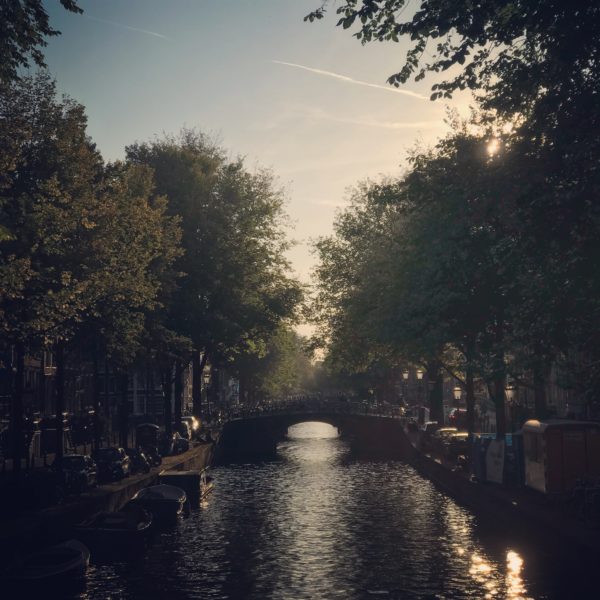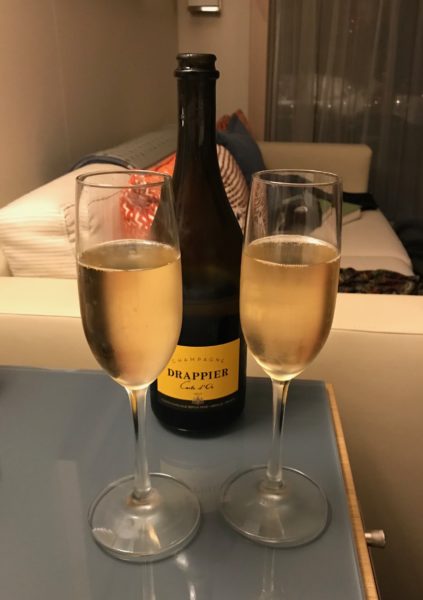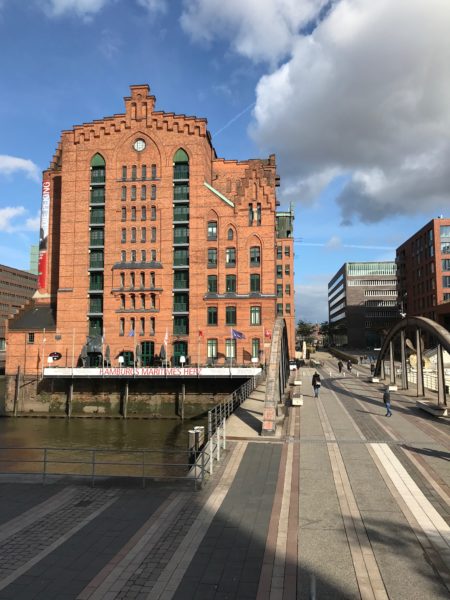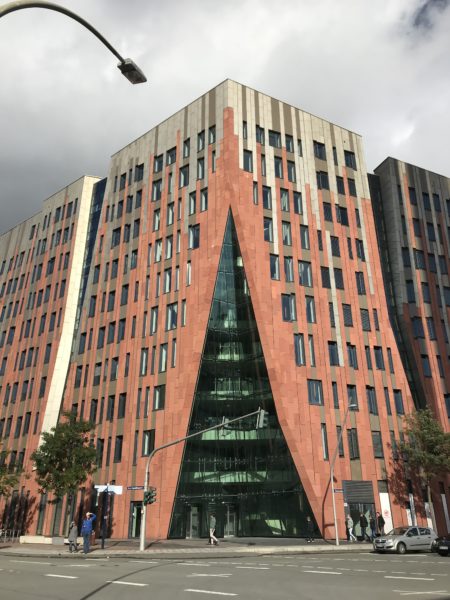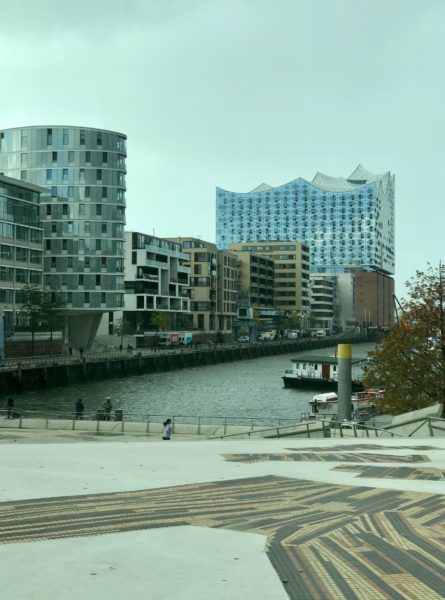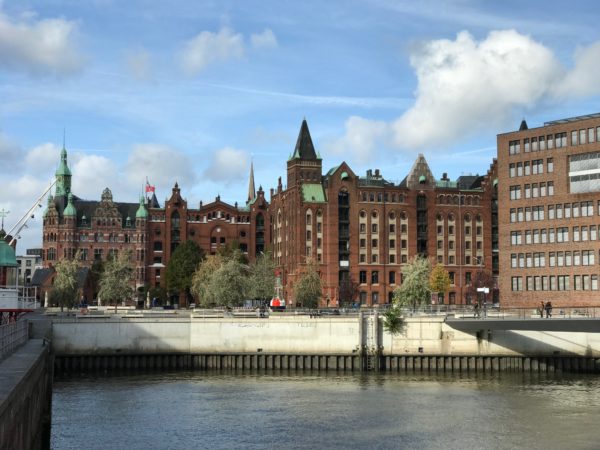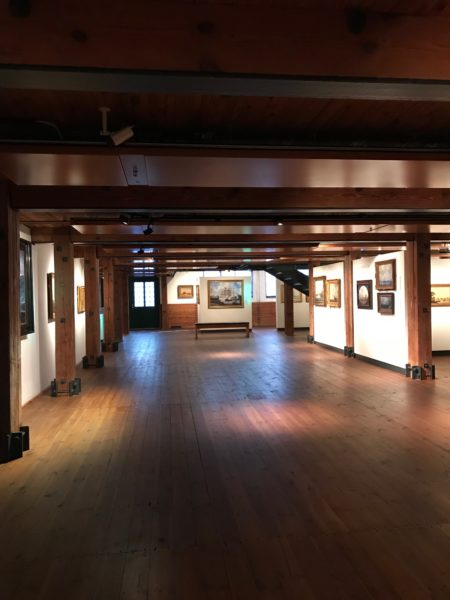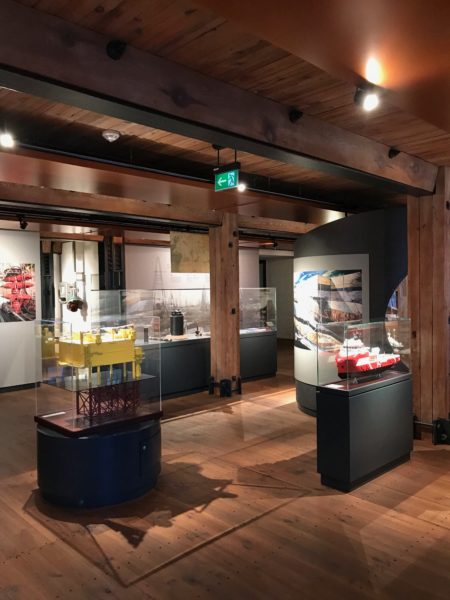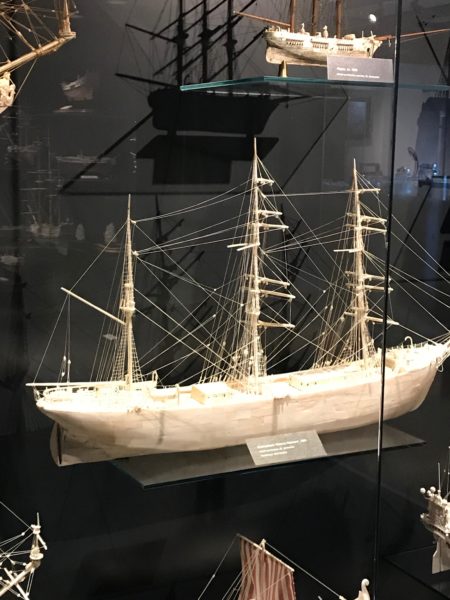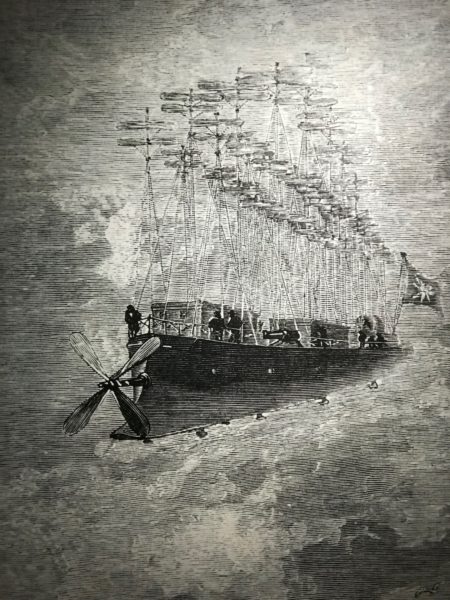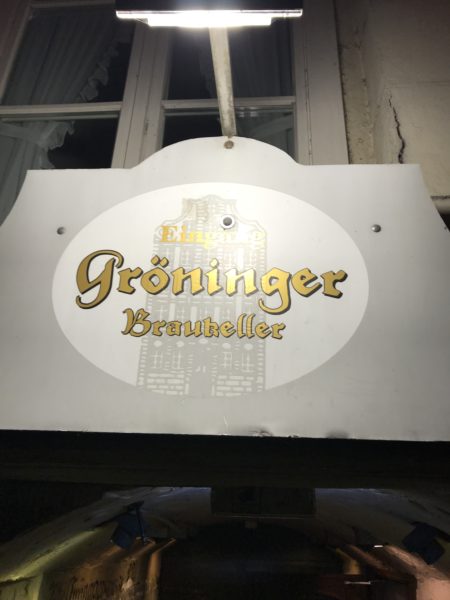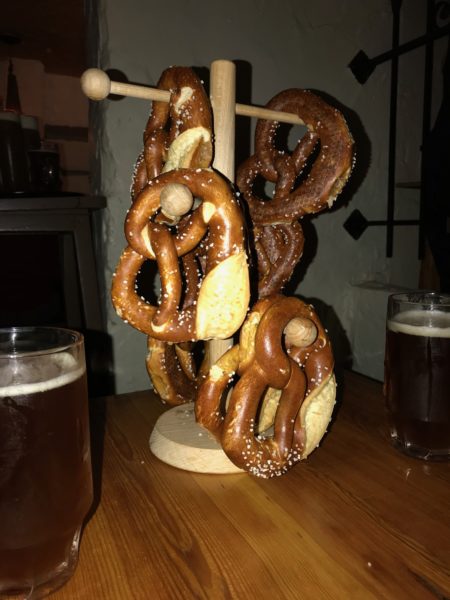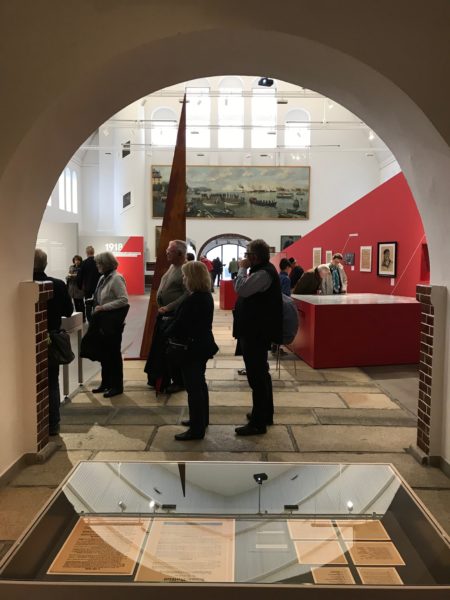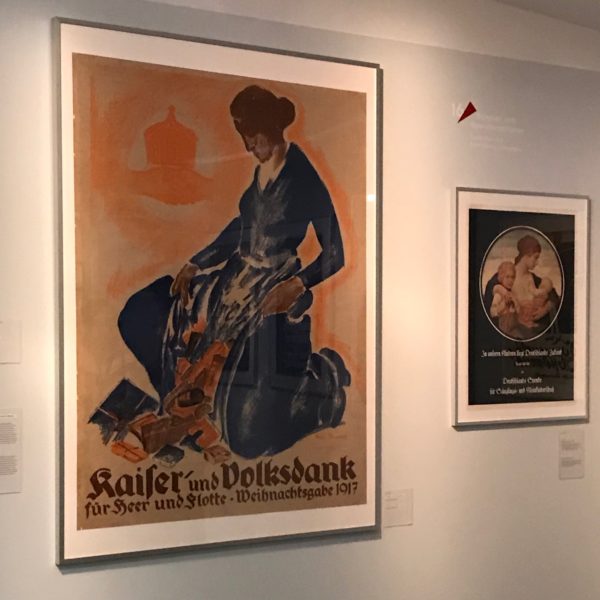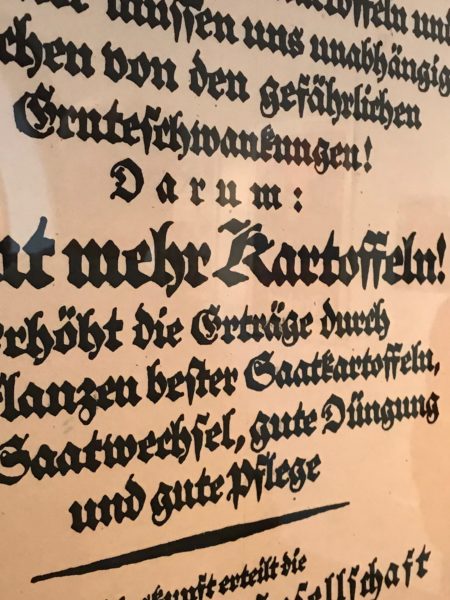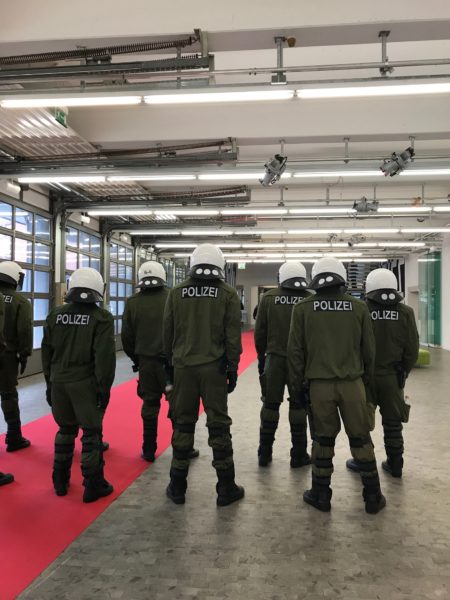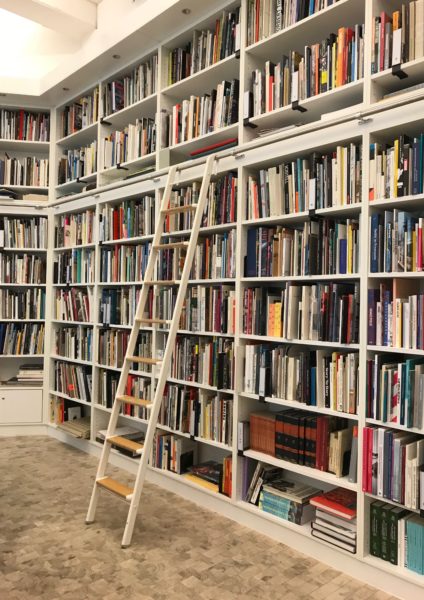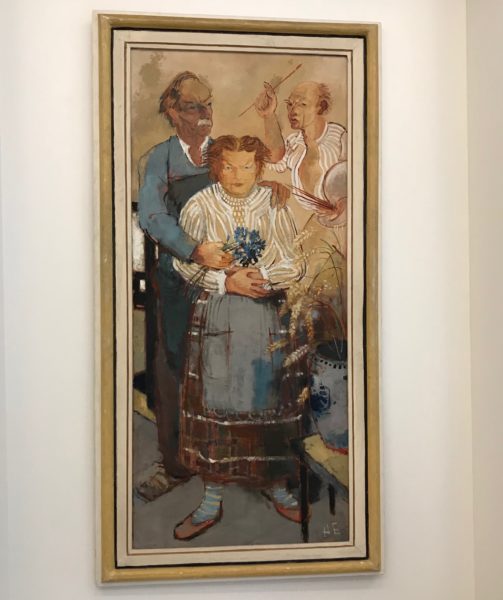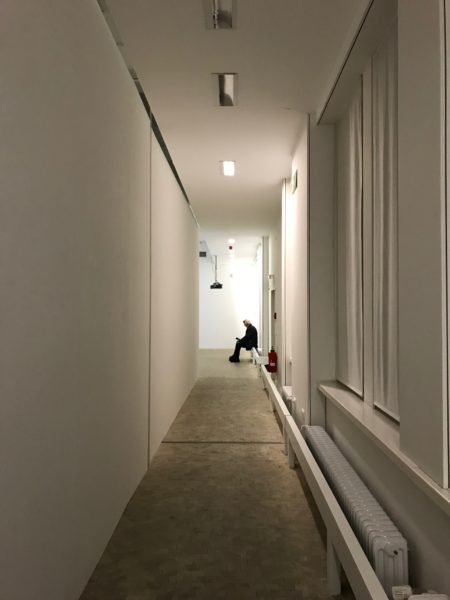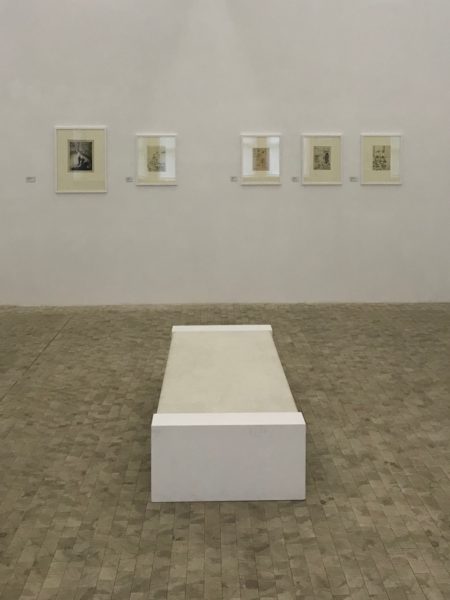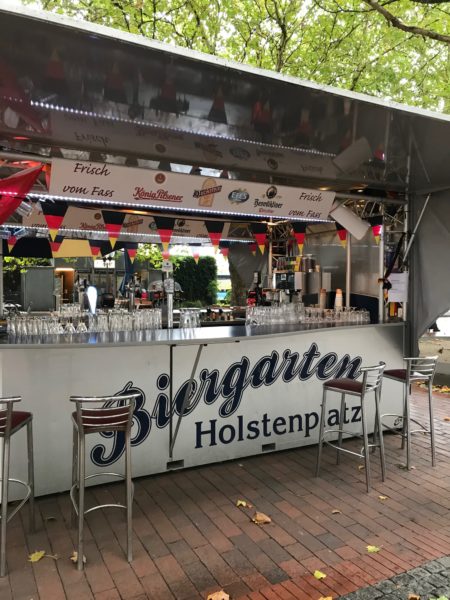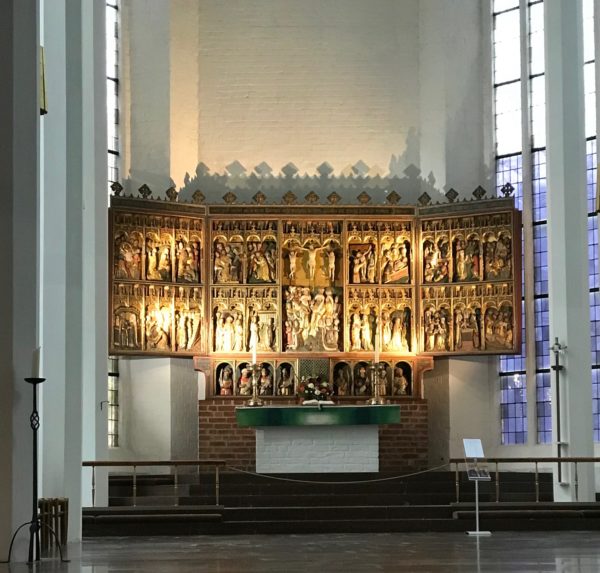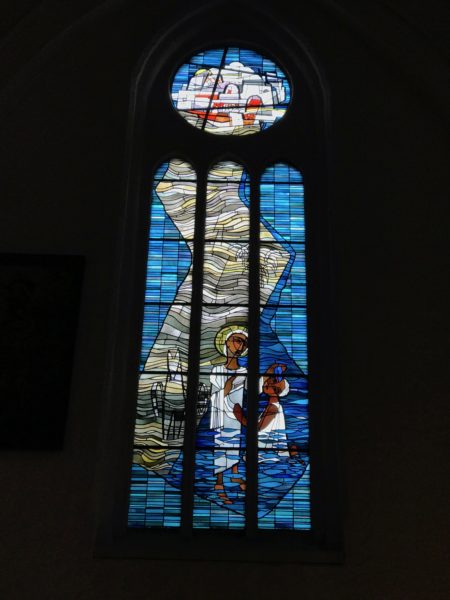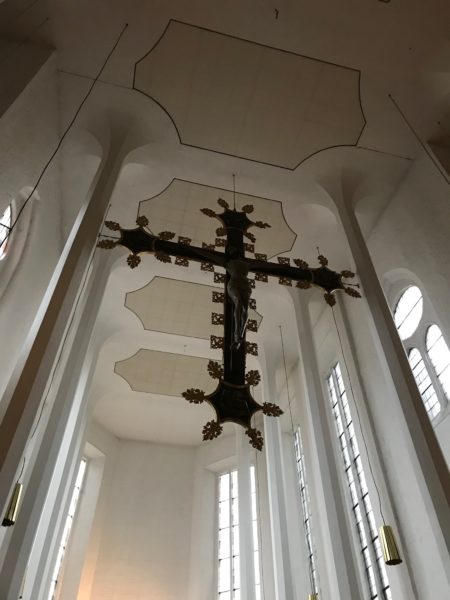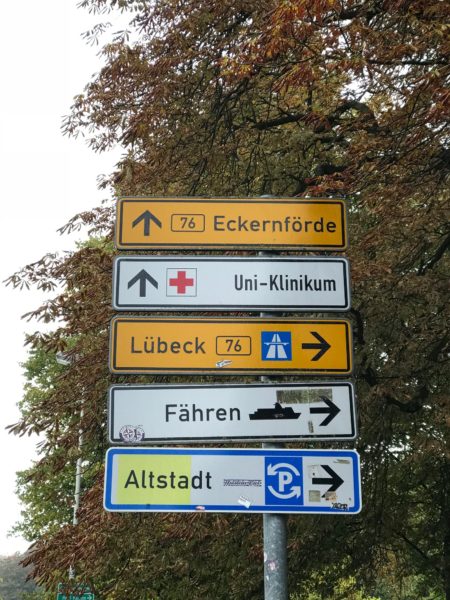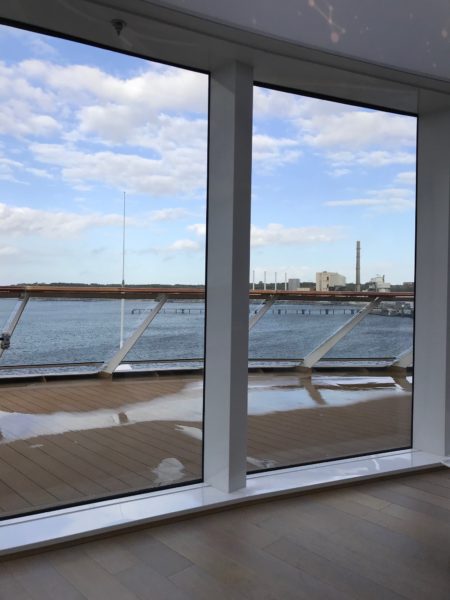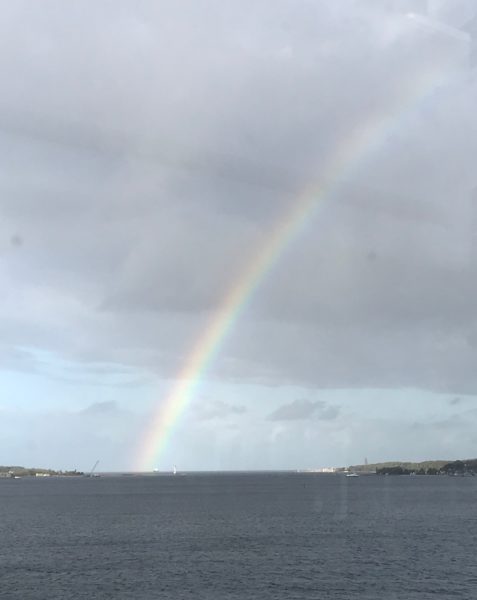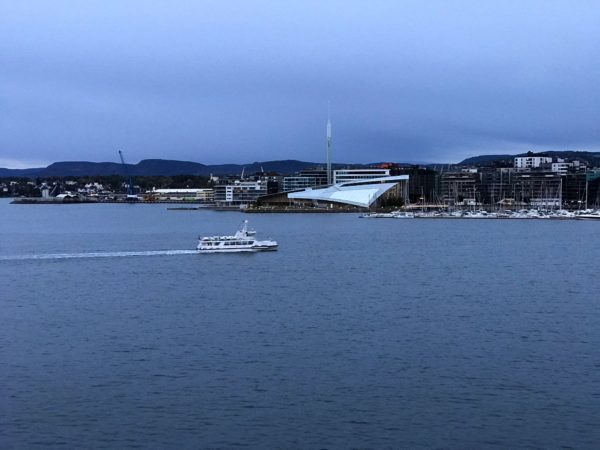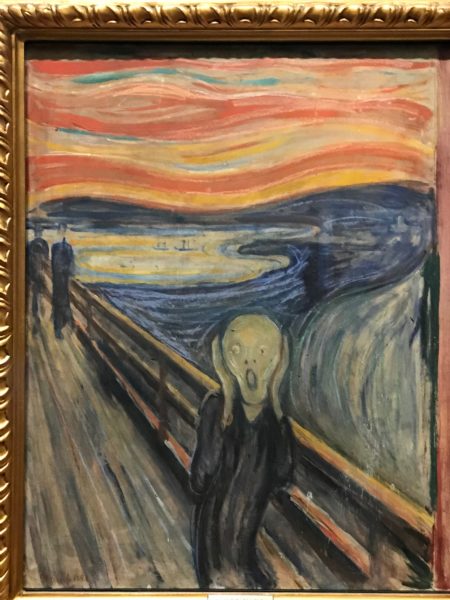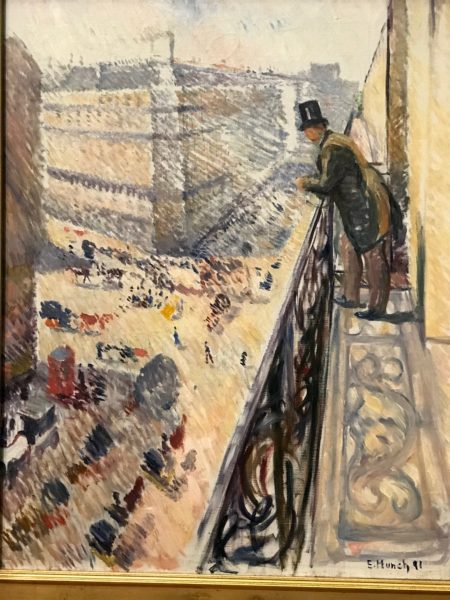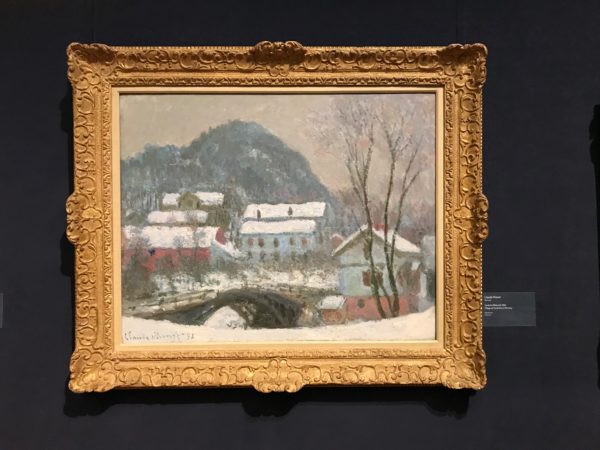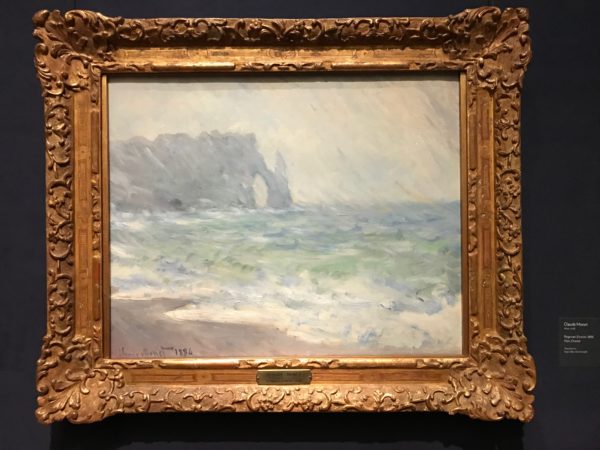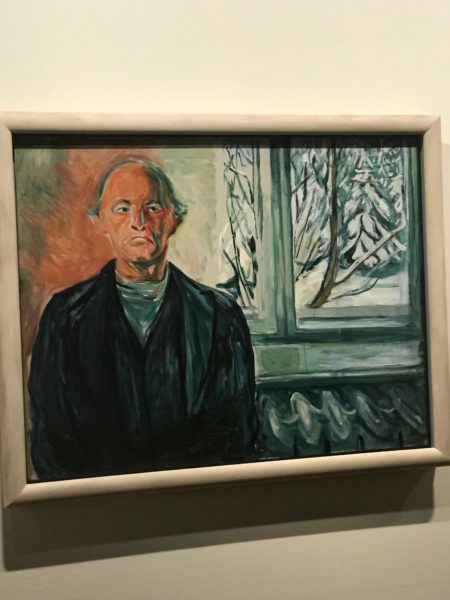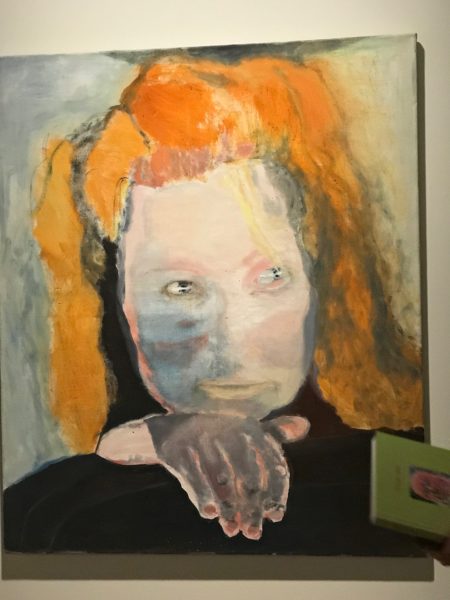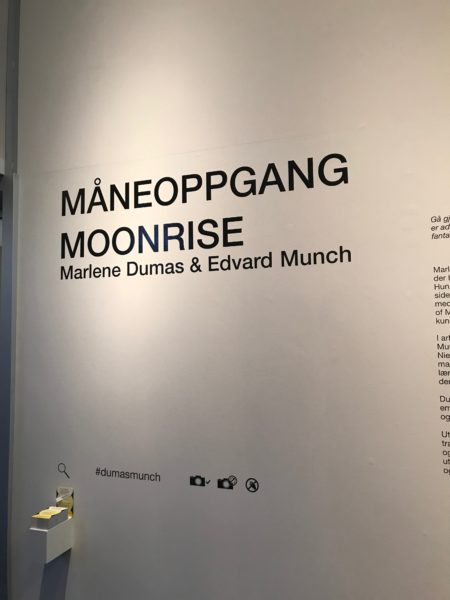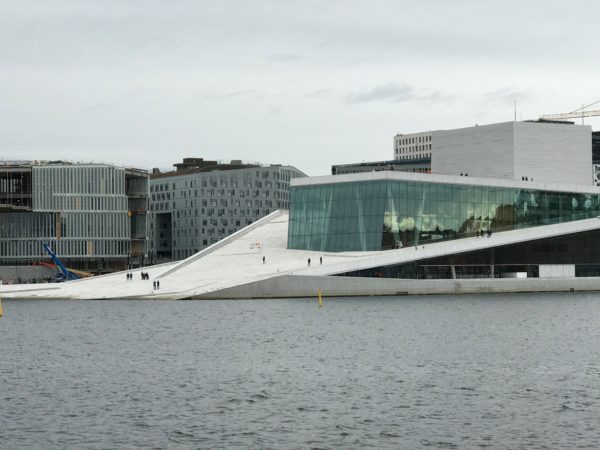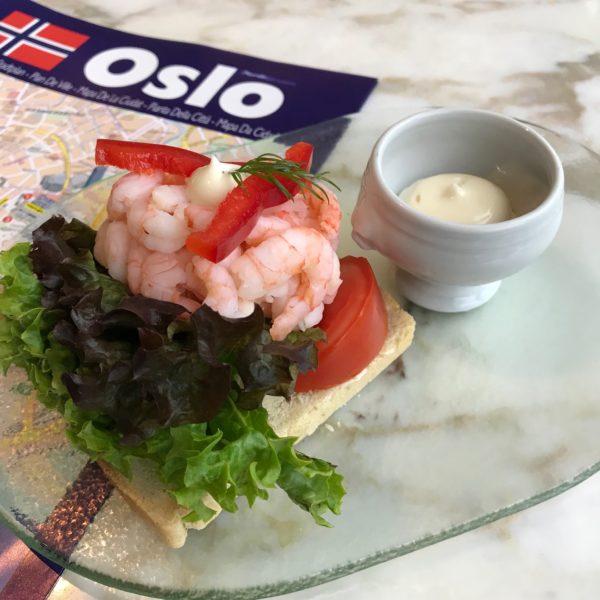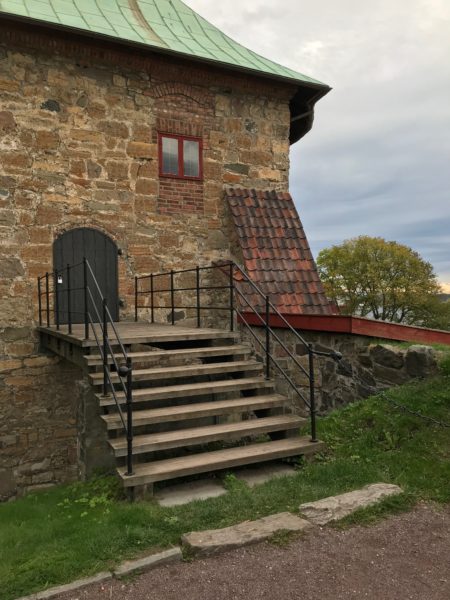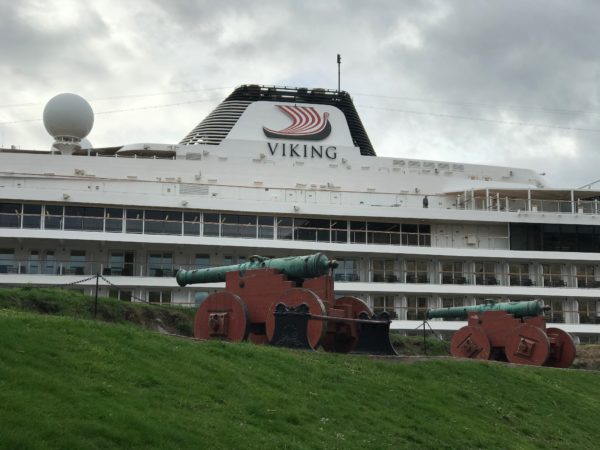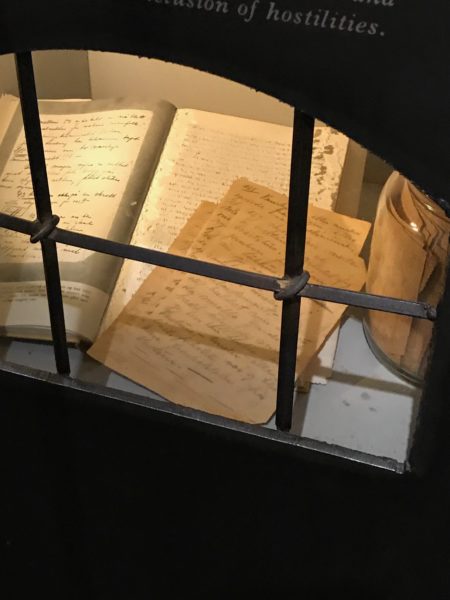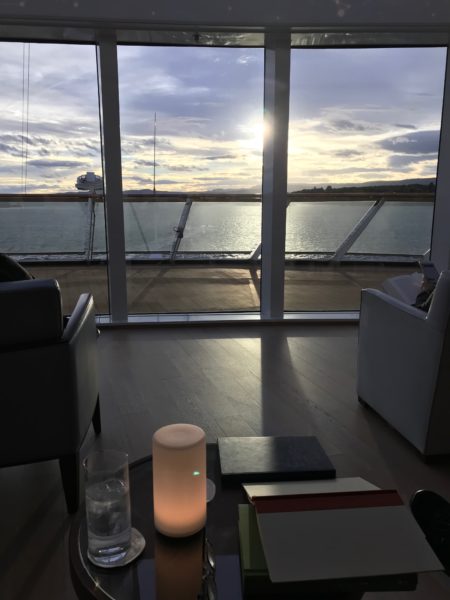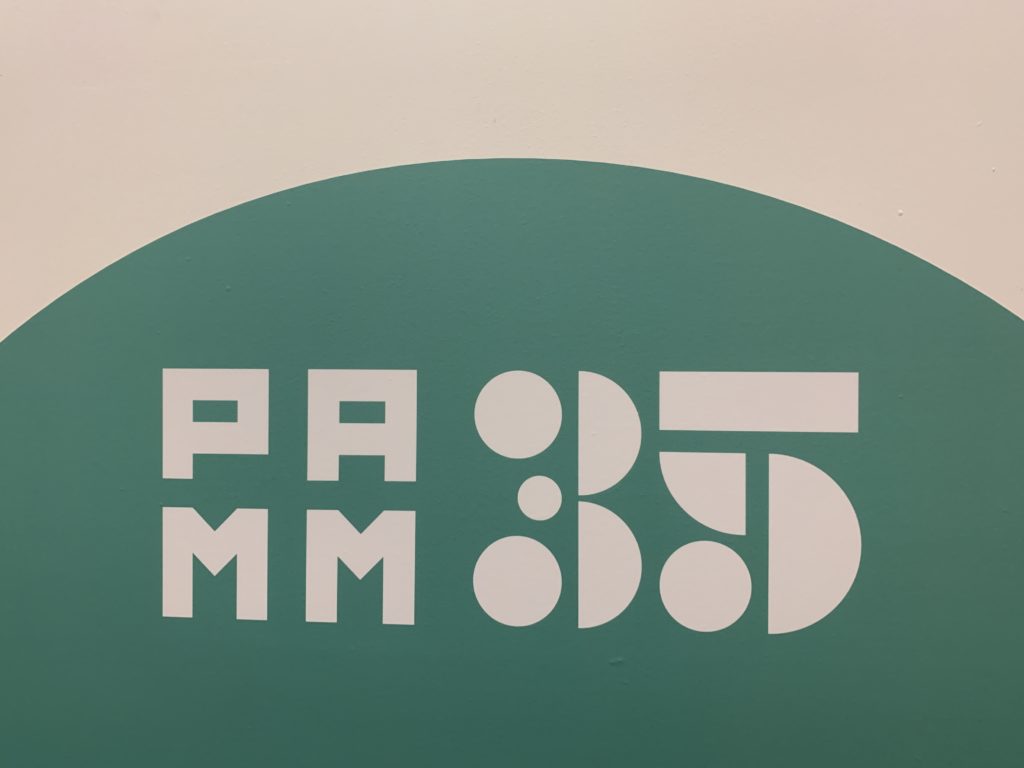
We arrived at the ship’s berth at noon and we were set to sail for Cuba at 6 pm. The buffet was beckoning as were the lounge chairs and the sparkling pool, but we were docked within view of the Perez Art Museum Miami (PAMM). We grabbed a plate of food, knowing there would be plenty of gastronomical experiences in the coming week, and grabbed a taxi to take advantage of an afternoon to see some art before we set sail.

Perez Art Museum 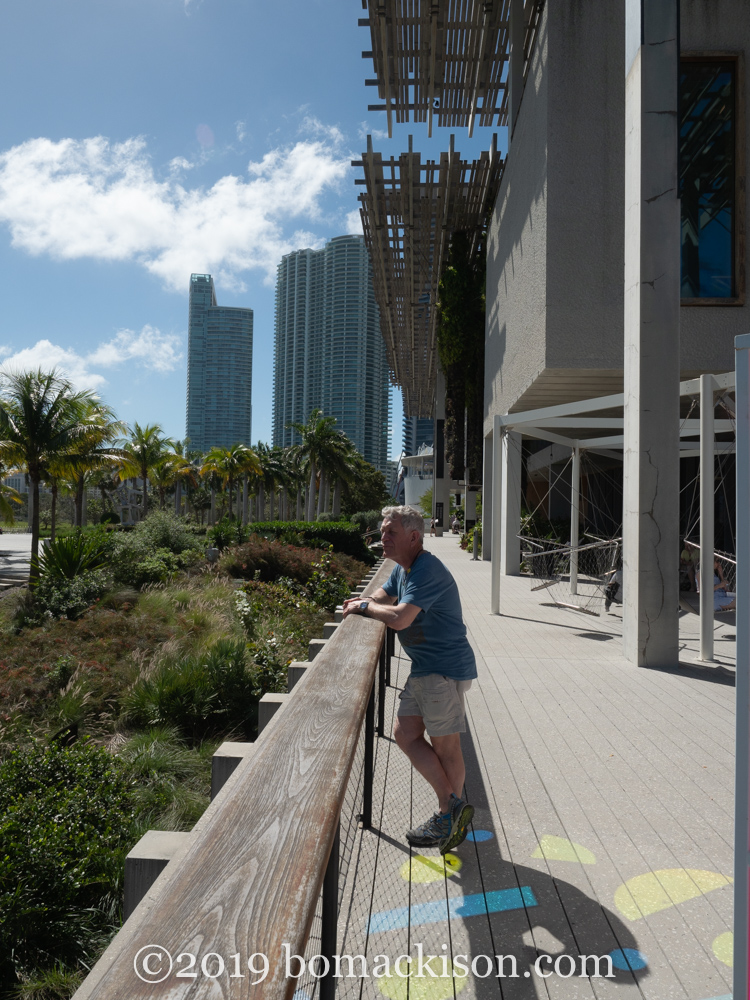
Miami Florida
PAMM is celebrating its 35th anniversary, though they have only been at this site since 2013. A minimalist building with great views — inside and out.

Once inside the art museum’s entrance, we were greeted by an impressive array of colorful vessels, all suspended from the high atrium’s ceiling.

“… the installation creates the impression of a massive exodus taking place throughout the architectural space above the viewer. It features a broad range of vessel types, from cigarette boats, catamarans, and cruise liners to ragged fishing skiffs and timeworn cargo ships
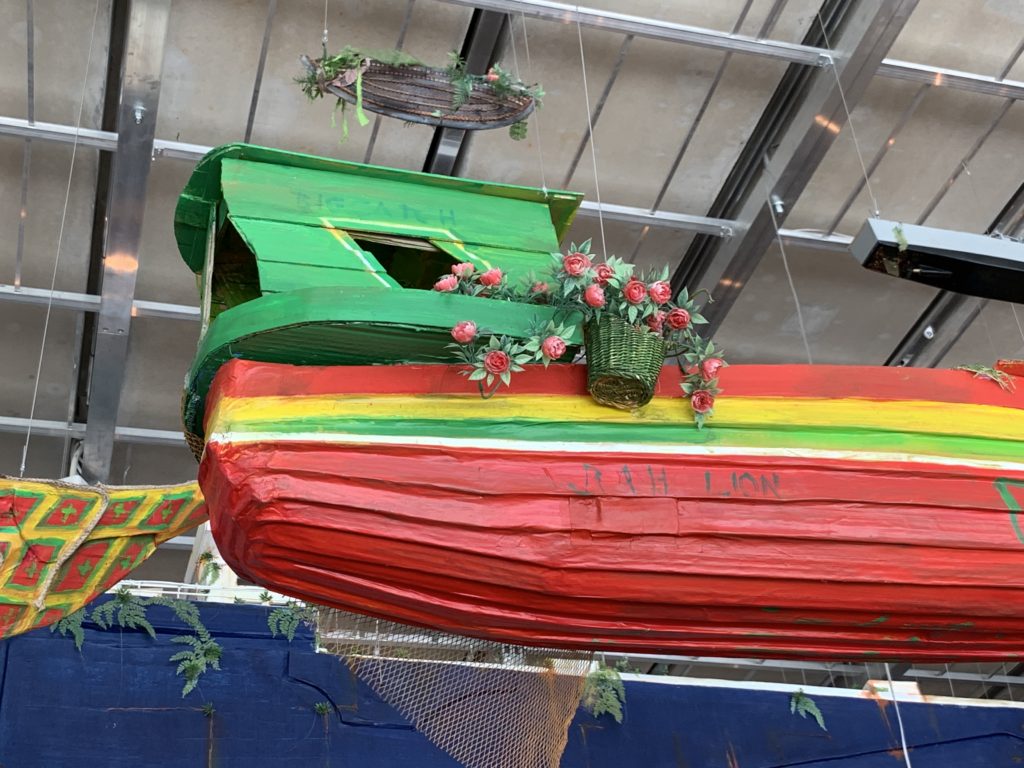
“In light of Miami’s history as the site for numerous waves of immigration—particularly from the Caribbean, and specifically by
~ from PAMM websitesea —For Those in Peril on the Sea will have a particular resonance for the Museum’s audiences.”

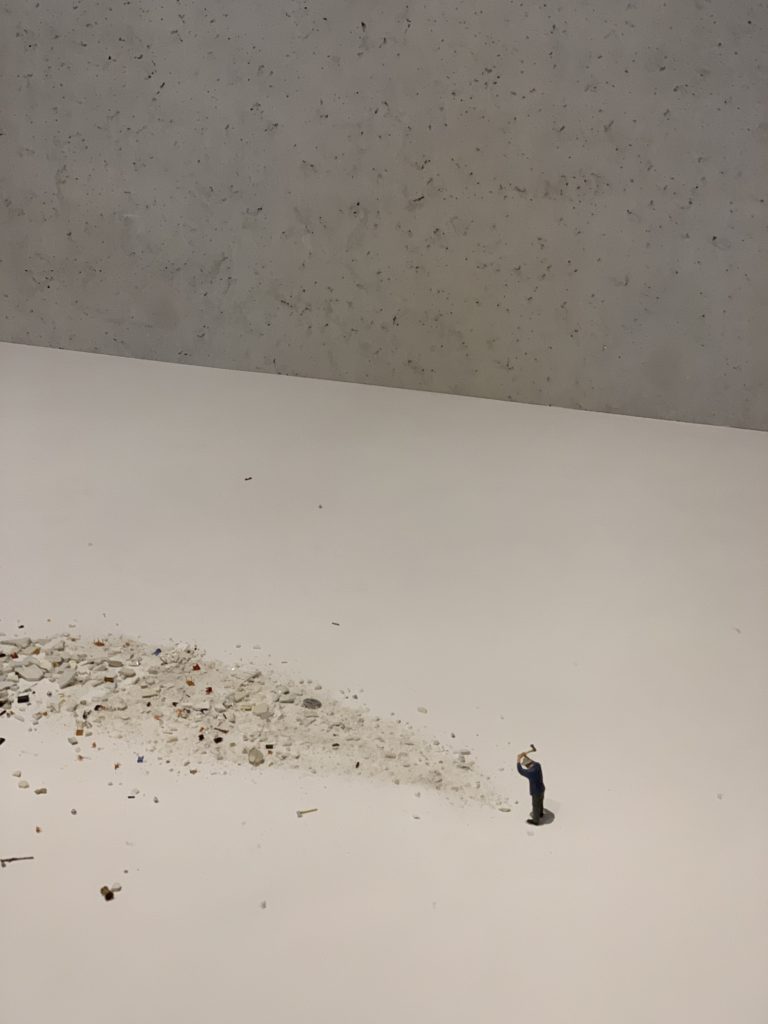
Man with Axe 
Man with Broom
This is only a tiny portion of the expansive installation in miniature by Liliana Porter. El hombre con el hacha y otras

The gallery with a view. It was a popular place for selfies and too-numerous-to-count photo ops for several young women. I eventually decided I didn’t have enough time nor patience to wait and so took a photo of the view plus Bob plus strangers. There were other things to see, but one of my first views of the Atlantic Ocean was still a highlight.
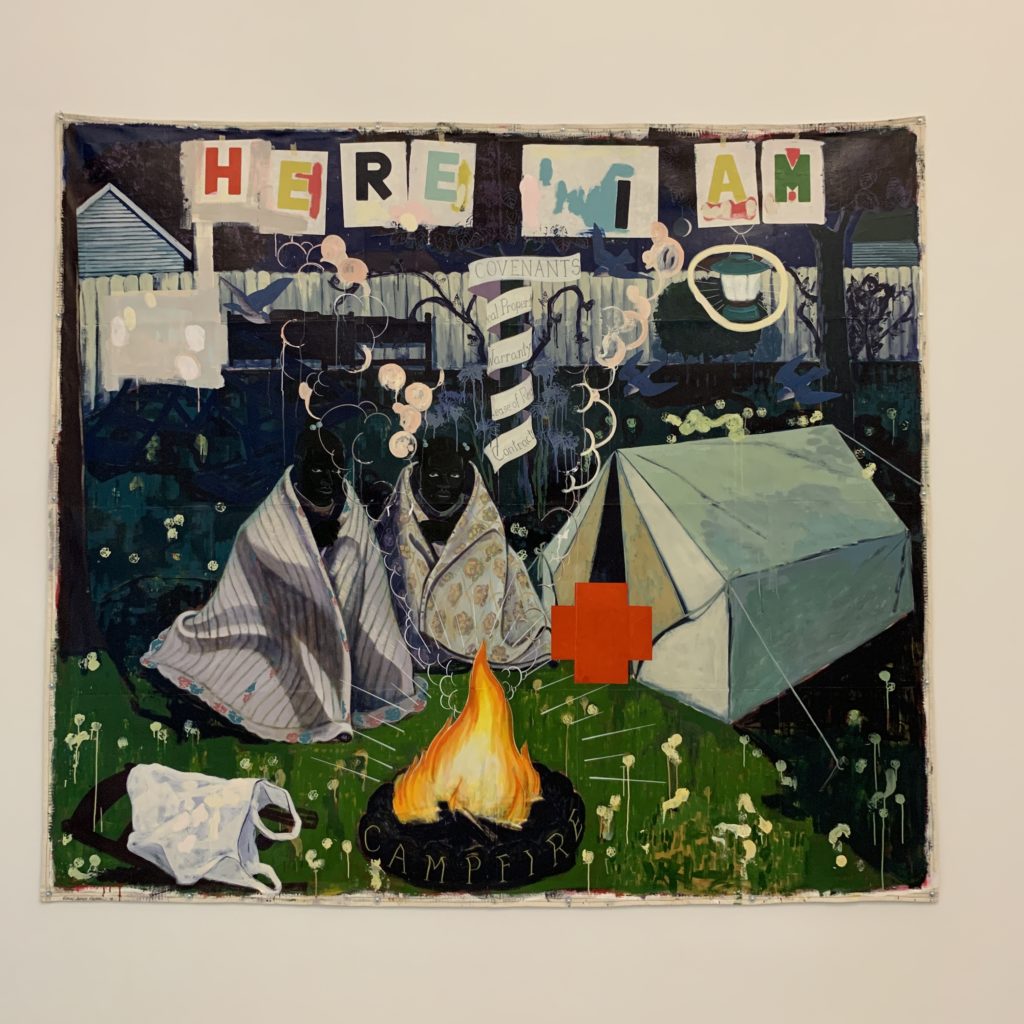
Marshall has long emphasized the importance of creating ordinary representations of black people at leisure, representations that are largely absent from the history of painting.
from PAMM exhibit

while the dew is still on the roses . . . presents the work of Kingston-born artist Ebony G. Patterson (b. 1981). The most significant presentation of the artist’s work to date, the project includes examples of the artist’s work produced over the last five years, embedded within a new installation environment that references a night garden.
~ from Perez Museum of Art Miami website

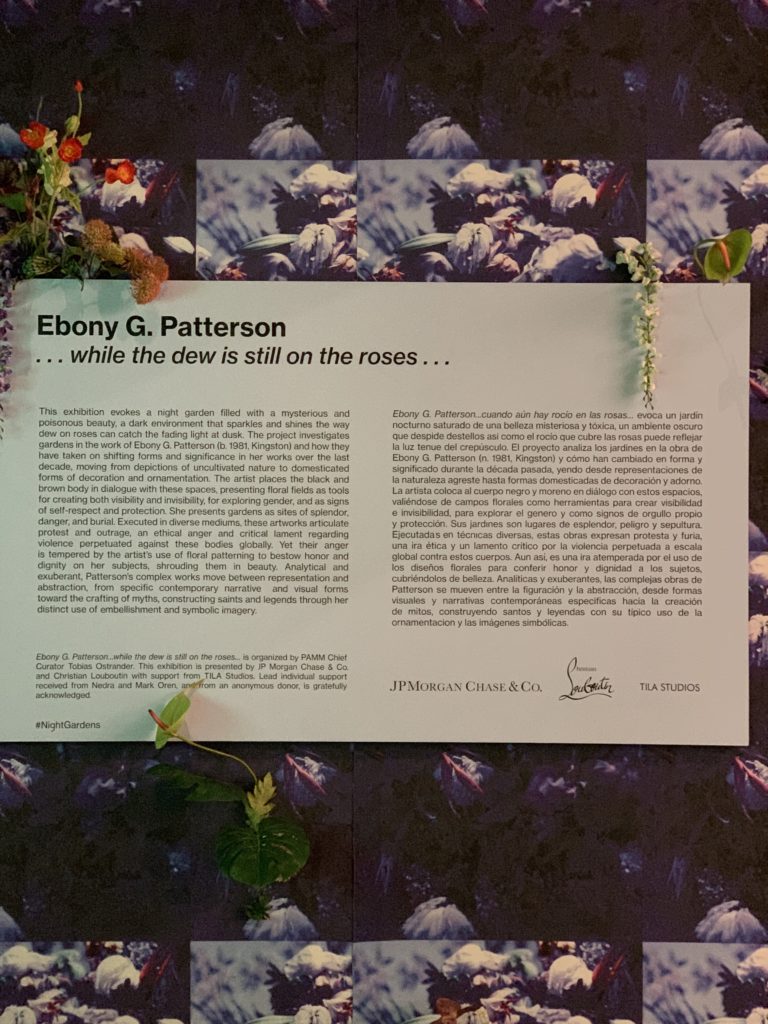
This was my favorite exhibit – a large darkened room filled with the artist’s “drawings, tapestries, videos, sculptures and installations that involve surfaces layered with flowers, glitter, lace
Teresa Margolles b. 1963 La gran America (America the Great), 2017
Handmade cobblestones made from dirt and clay collected from both sides of the Rio Grande, fired and set into a wall installation.
